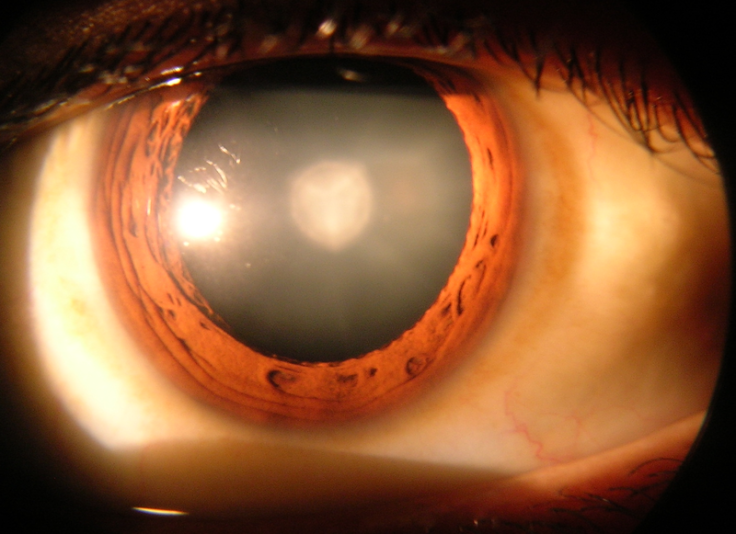Cholesterol Lowering Statins Linked To Cataracts

Statins such as Zocor (simvastatin) and Lipitor (atorvastatin), taken by one-fourth of Americans ages 45 and older to help fight high cholesterol, has been linked to the formation of vision-blurring cataracts, according to a new study published in JAMA Ophthalmology.
The study, led by Dr. Ishak Mansi of the University of Texas Southwestern Medical Center and Dallas VA Medical Center, shouldn’t dissuade current statin users from taking these medications. Researchers are unsure whether statins cause cataracts. Moreover, earlier studies and formerly prevailing thought implied just the opposite: statins were believed to prevent cataracts.
Cataracts form when the tissue inside the lens of the eye breaks down, eventually becoming cloudy. Since light passes through the lens, cataracts can distort a person’s vision. Causes of developing cataracts include genetic disorders, diabetes, trauma, and other conditions, according to the Mayo Clinic.
To establish the link between statins and cataracts, Mansi and his team examined the medical records of patients ages 30-85 who received care from 2003-2005 within a healthcare system based in San Antonio, Texas. An initial analysis compared 7,000 people on statins for 90 days and 7,000 who did not take statins but had similar health conditions, medications, and healthcare use. This comparison showed no significant difference between the two groups.
However, a second analysis compared 6,113 statin users with no other health conditions with 27,400 people in comparable health. After adjusting for demographic characteristics, medications, healthcare use, vision conditions, cigarette and alcohol use, researchers found a difference, 34 percent of these statin users had a diagnosis of cataracts, compared to 10 percent of those who did not use the drugs.
Researchers did not identify the reason behind the link between statins and cataracts, but did suggest a hypothesis. They guess that high levels are cholesterol are needed to keep eye lenses clear, and statins interfere with this process.
For many who take statins, developing cataracts may just be a necessary side effect of the otherwise life-saving medication. Removing cataracts is among the safest and most common medical procedures, while uncontrolled high cholesterol can lead to life-threatening heart disease and stroke.
"For patients themselves, my advice is to discuss what your benefit and risk ratio is for you with your doctor," Mansi told Reuters.
But the risk developing cataracts is not the only potential downside to statins. Recent research has linked statin use to a number of other conditions, including rheumatoid arthritis, kidney failure, and muscle pain.
All these risks with cholesterol-lowering statins underscore the fact that the best way to fight high cholesterol is through lifestyle habits of a healthy diet and exercise
"This should motivate patients to do their part. Quit smoking, eat healthy and be active so doctors don't have to give you a tablet that may have some side effects," Mansi said.
Source: Mansi I, Panday V, Mansi EA, Frei CR, Mortensen EM, Leuschen J. Association of Statin Use With Cataracts: A Propensity Score–Matched Analysis. JAMA Ophthalmology. 2013.



























